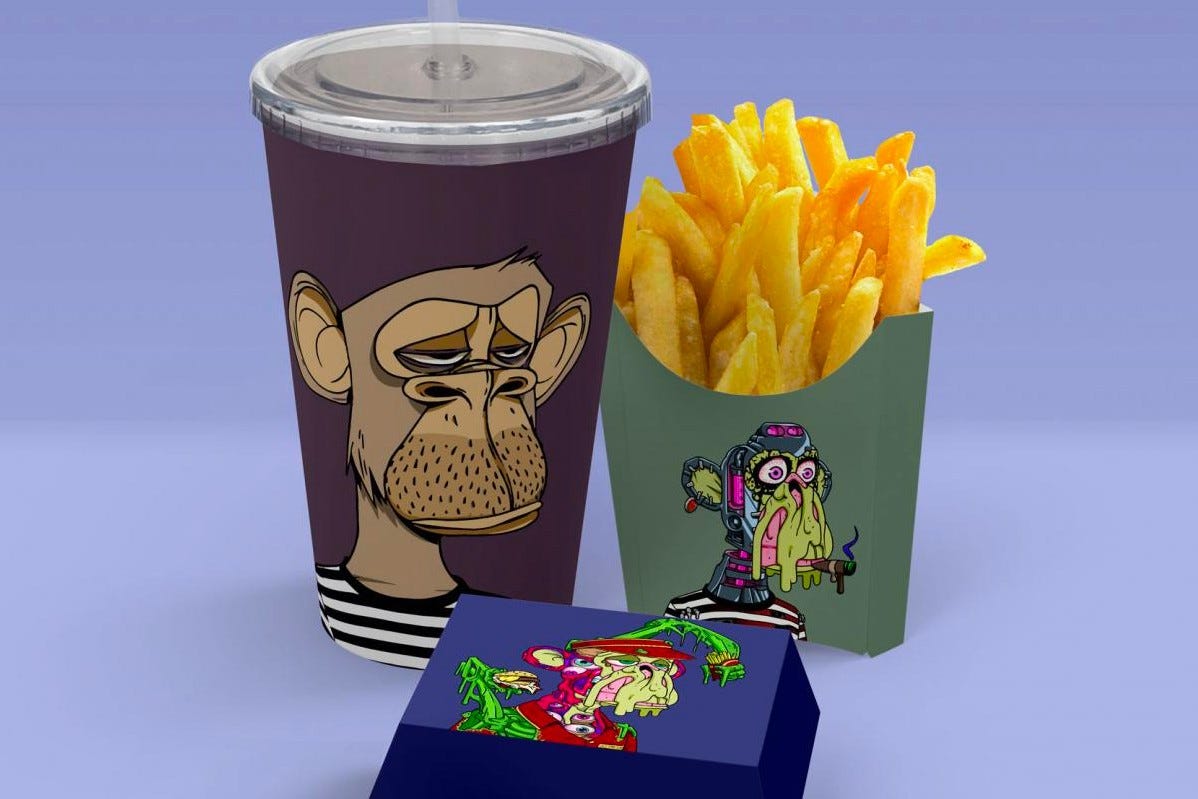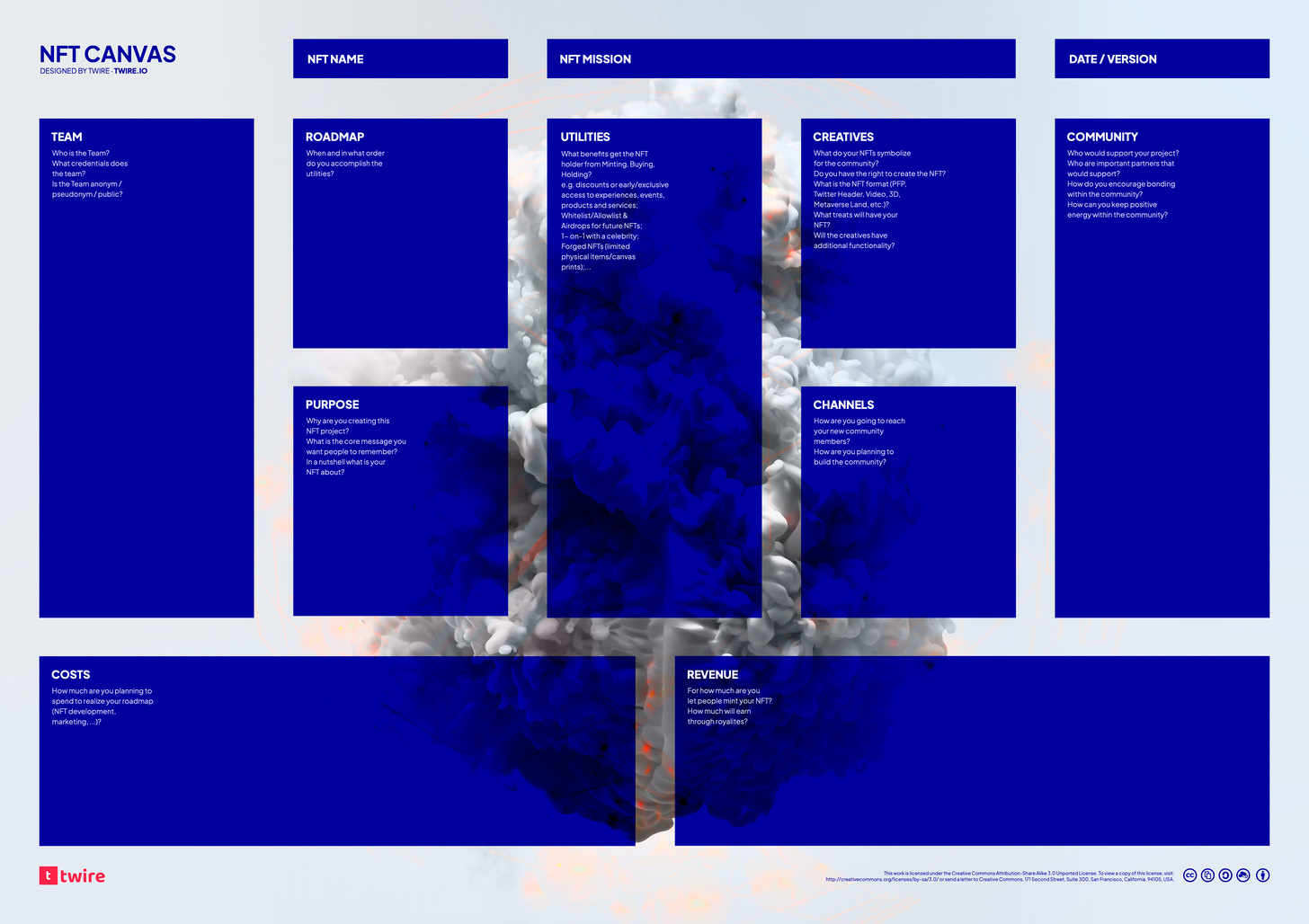Hello again, and thanks for joining me at Becoming Metaversal. In each issue, I aim to update you about what’s been happening in Web3 and the Metaverse. My ambition is to help you learn, grow and build in the space and to do so, I have organise the content into three sections:
News and what’s been making headlines
My recent ideas, thoughts and inspiration
Great tools and thought leadership from other people that I want to share
And lastly, before getting into the content, if you are reading this and haven’t subscribed yet, you can join the growing group of people by subscribing here. 🚀
The news that’s been making headlines over the past few weeks
There is never a shortage of things happening in this space, and the past two weeks are no exception. Here are a few of the headlines that caught my eye:
Mark Zuckerberg spoke at SXSW where he teased that NFTs would soon be coming to Instagram. Read about that here.
Those of you, who have read my newsletter before will know that I am very passionate about the identity space within Web3. Polygon is the latest to dive in through the launch of Polygon ID. This is super exciting to me as I believe that Identity Use Cases can rapidly accelerate people’s onboarding in this space.
The NBA broadcasts a game in Volumetric Video. Read about it here.
US Justice Department charges two people with wire fraud and money laundering in the NFT “Rug Pull”. They are saying that this space cannot circumvent the law. Read more here.
Identity brands continue their race as the early business adopters of the Metaverse and Web3. This past week was the first Metaverse Fashion Week and there are so many articles you can find about it:
Metaverse Fashion Week Draws Big Brands, Startups - Wall Street Journal
What fashion week looks like in the Metaverse - Vogue Business
I went to Metaverse Fashion Week and it was like a dystopian nightmare. - The Sun.
Continuing the Cards trend of offering Crypto rewards, Robinhood jumped into the frame with their new Debit Card that lets users "round up" their purchases to the nearest dollar, with the change going into stocks or crypto. - Read about it here.
NVIDIA launches Instant Nerf - an AI tool that turns 2D photos into 3D scenes.
Ukraine Launches NFT Museum to Remember The War Against Russia And Raise Funds - Read about it here
Midpoint launched a platform that allows blue-chip NFT holders who own the IP rights of their NFTs to license those rights to 3rd parties for commercial gain. It’s a really interesting model with the potential to deliver NFT owners with a passive income stream.
Bored Ape Yacht Club pioneered new practices in the IP rights space by allowing owners to leverage the art for commercial purposes. A Los Angeles restauranteur has opened a new place called Bored & Hungry where he is now using those rights for branding purposes. Read about it here.
In other Ape related news:
Bored Ape Yacht Launched and AirDropped their new ApeCoin token to all Ape and Mutant NFT holders. I’ve written more about that below, but you can read the news here.
Bored Ape Yacht club creator Yuga Labs raised $450m at a $4b valuation. The money is going towards their vision of building the Metaverse. Read about it here.
What I’ve been thinking about this week
There has been a lot of news over the past few weeks, but the news that really got me thinking was the ApeCoin drop and the instant wealth that materialized as a result. It is amazing to think about the numbers, but also, it gave me an idea that I want to share and get your thoughts.
Note that this is an idea for combining Use Cases and products that other people have developed. I have not spoken to the companies or people mentioned - the thinking is just hypothetical. But before getting into it, let me just give you a little window into the way my mind works, and how I got to the idea …
If we were talking about stocks, then the creation of a new asset that comes out of an existing publicly listed company would either take the form of a dividend or a spinoff.
In the case of a dividend, the share price of the stock typically loses the same value as the dividend after it happens. So for example, if you pay out a dividend that is equivalent to 10% of your market value, then your share price will lose 10% value as that money is no longer part of your company.
In the case of a spinoff, the share price of the original company = the share price of the spinoff + the share price of the now reduced company. The reality of this can actually be quite different as people may value the newly formed component quite differently, but the principle is the same.
When ApeCoin dropped, the value went from $0.00 (as it didn’t previously exist) to roughly $13 shortly after launch (it actually went much higher, but only briefly so let’s use this figure) in an instant.
Following the logic above, you would expect the recipients of the AirDrop to have a similar value, and while the underlying NFTs (Bored Apes, Mutant Apes, and Kennel Club) saw their floor prices quickly drop, they then fully recovered to the point that there was no real loss of value. In short, both value and wealth were created (or rather from the demand for a coin based only on the perceived potential of a future) and distributed to the NFT holders with no associated costs or contrary actions.

Today, ApeCoin has a market cap valued at over $3.5 billion dollars - the majority of which is concentrated in the hands of the Yuga Labs (creators of Bored Ape Yacht Club) founders, investors, and NFT holders.
And having announced that they raised $450 million this past week, it doesn’t look like Yuga labs are stopping anytime soon. With funds in place to build their vision of the Metaverse, called Otherside, there is a potential for future AirDrops that could include land tokens, or other Metaverse / gaming-related elements. The film below is a trailer/preview for Otherside.
All in all, Yuga Labs and Bored Ape Yacht Club have continued to create tremendous value for their community. However, it should be said that with only ten thousand Apes and around twenty thousand Mutants, it is also a very dense concentration of wealth.
Concentration and centralization of wealth is an increasingly common critique of the broader Crypto markets. With research saying that just 0.01% of bitcoin holders control 27% of the tokens in circulation, there is a growing question mark about the degree to which Crypto represents a redistribution of wealth that many have purported it to be.
Some other interesting articles on the centralisation of crypto wealth:
Don’t get me wrong, these have obviously shaken up the system in many ways, and there are many everyday people who have seen life-changing windfalls from BAYC and ApeCoin and other tokens. In the case of ApeCoin, many even saw fit to “share the wealth” with those who were not so lucky.


Honestly, seeing this warms my heart - and @thejianhaotan was far from the only person to offer such kindness.
All that said, I am not naive. I recognize that in some cases, promises like this may be disingenuous and may actually just be people looking for likes, shares, and follows in an effort to increase their reach and share of voice on Twitter. Still others may have good intentions, but at the end of the day may not follow through on their promise. That said I like to believe they did, and that feels good.
It’s not without precedent to see this kind of generosity in the crypto space. FTX for example gives 1% of their fees to charity. And they are not alone. Many of the larger crypto brands recognize and act on their potential to do good and give back.
One of my favorite examples of how crypto can “give back” comes from a much smaller business called Proof of Humanity. The idea behind Proof of Humanity is simple: Create a Self-Sovereign digital identity system for the internet that gives people control and trust in their digital interactions.
But in addition to identity, part of their proposition revolves around giving, and to achieve that, they launched the UBI token as a tool to deliver people a Universal Basic Income. It works by simply depositing one $UBI token into the wallet of every person verified on Proof of Humanity every hour forever. That’s 24 tokens a day, 168 tokens a week, about 5,000 a month, and 60,000 a year for every person who registers. And they get it, just for registering.
The token is currently only worth about 4 cents, but even at that price, it represents about $200 a month. That might not sound like a lot of money to all of you, but in some parts of the world that can be rent, and it can make a huge difference to the people who need it.
The problem of course is that the process of constantly creating tokens with no cap is highly inflationary - and will inevitably result in a constantly declining value. For that reason, they’ve put in some deflationary mechanics that result in the reduction of token supply through token burning as well.
Examples of this include partnerships with Gaming when buying in-game items results in burning UBI, NFT projects have been launched by 3rd parties with the objective of raising funds to buy and burn UBI, or people can simply buy and burn tokens burn them to reduce the supply. Apparently, Vitalik Buterin actually did exactly this and bought some UBI tokens with the Shiba Inu tokens that he had been gifted and burned the UBI supply to apply deflationary pressure on the UBI token as a way to support the project and the thousands of people who depend on it for a better life.
It’s an amazing project that treats everyone exactly the same: a person from Connecticut will get the same token allocations as someone from Argentina.
If you are interested in this project and want to learn more about it yourselves, I can’t recommend this episode of the Green Pill podcast with Kevin Owocki (founder Gitcoin) and Santi Siri (founder of Proof of Humanity) enough.
I love the ambition of this project as it takes the idea of Universal Basic Income and it scales it from small geographically isolated experiments to something international and accessible to all. And that brings me to the idea I mentioned at the start of this article.
An idea to scale wealth decentralization

Web3, DApps, NFTs, Crypto, think about this space from any starting point you like - in general, what they have in common is that they are developed around smart contracts that are open for people to connect to, build on top of, or fork. We’ve seen this behavior most actively in the DeFi space with people forking projects and creating alternatives, and increasingly in the NFT space as well.
The potential for smart contracts to connect business Use Cases in the same way that programmers connect open source software functionality is what I find most exciting about this space. I think of it as “business composability” and I will be writing a lot more about where I see the potential for these connections, but for now let’s think about a simple idea that connects two things that already exist in order to scale the value delivered:
UBI - Where Universal Basic Income tokens are distributed to people just for existing
Crypto Credit Cards - Give you cashback on your spending in the form of Crypto rewards.
The idea:
Use my credit card spend (my consumption) as a trigger to redistribute wealth to people in need by using crypto and UBI tokens as the distribution medium.
How this could work:
Instead of Crypto Reward Cards giving you 1% cashback in BTC or ETH or whichever other token is available, they use the 1% to buy $UBI tokens and then burn the tokens to reduce the supply. So instead of getting 1% of the value of your transactions back in crypto, you pass the value to the people receiving $UBI tokens by applying deflationary pressure through the destruction of coins, and the reduction of supply.
To make this a bit more appealing for credit card holders, another idea would be that UBI establishes a charity foundation whose sole purpose is to buy its own $UBI tokens and burn as a way to apply deflationary pressure (upwards pricing pressure) on the token thereby ensuring that recipients continue to get life-changing value from it. If a charity like this existed, it might allow crypto credit card companies to simply donate the 1% reward to the UBI charity each month on behalf of the cardholder. At the end of the year, the card company could give the cardholder a receipt for their charitable donations - which in some countries might even be tax-deductible.
Note that I am not an accountant. I don’t specialise in taxes. This is a speculative idea and it should not be considered financial or tax advice of any kind.
Potential impact:
You might be asking yourself how much of a difference an idea like this could really make - after all, 1% of most people’s total credit card spend each year isn’t huge. But according to Visa’s annual report, the combined total card spend of Visa + Mastercard was about $6 trillion in 2020. I don’t know what percentage of that is from Debit Cards vs. Credit Cards, but let’s assume that 75% of that is debit and only 25% is credit. That still makes for a total Credit Card spend of $1.5 trillion. A 1% reward on that figure would represent $15 billion in token purchases. This of course is an entirely unrealistic expectation as the crypto credit card market is still small and not everyone would want to give, but it shows that the size of the prize is huge, and the potential impact is equally huge.
Interestingly, where Proof of Humanity has already taken the experiment of Universal Basic Income and pushed it internationally, partnerships such as this offer the potential to go a step further and make private industry (credit cards companies) and private citizens the fuel that drives the value, reach and impact of Universal Basic Income without requiring government support. And all through a crypto-powered mechanic that would use consumption as a catalyst.
The more you spend, the more you give to the people who need it.
And best of all, it would mean that people could give without even trying. Without ever feeling out of pocket. But at the end of the year, they would get evidence of their generosity in the form of a receipt for your donations.
What do you think of that idea? If this idea existed, would you sign up to give your 1% crypto reward back to people who are needier than you (regardless of where they are in the world)? If you would sign up for a card like this, then please click the ❤️ icon to like this article. It will be like a small sample group survey, and if enough of you would do it, maybe we get this noticed and make it happen.
Useful tools, decks, thought pieces, and podcasts that got me thinking this week:
The Yuga Labs investment deck was leaked. It’s a 90 slide deck that outlines past revenues, and future forecasts while offering a window into their plans and roadmap. Have a look here.
Creating a last growth strategy for Web3. A great article from Matias Honorato
After launching Crypto payment rails, Stripe is fast at work on publicizing the Use Cases - including the ability to automatically offset carbon.
Twire launched their NFT Canvas. It’s a great resource - so check it out.
A16Z future published a great article on Web3 go to market strategies, tactics, and metrics
Raoul Pal from Real Vision regularly puts out some of the best content. This Twitter thread of his gives a great view into how he is thinking about the value in this space.

Citi released a long report about the Metaverse and Money. Lots of different use cases are referenced in this doc for those who are interested.
None of what I have written about above should be seen as financial advice of any kind. Do your own research.
Please do share your thoughts and comments below.
One last thing before you go.
If you read this far and haven’t yet subscribed, you should. After all, how many newsletters do you read to the end?
And if you know anyone else who you believe would be interested, please share the newsletter with them. Thanks and have a great week.










